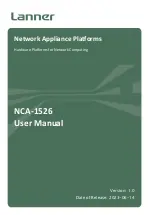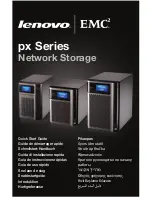
Motorola Netopia® Router Text Configuration Upload 4-1
Chapter 4
Motorola Netopia
®
Router Text Configuration Upload
This chapter describes the suppor ted TFTP text configuration upload process.
TFTP Text Configuration Upload Overview
You can configure many of the basic features of the router by uploading a text-based configuration file to the
router. This file can be either a Macintosh- or PC-formatted text file. There must be no formatting information in
the file – it must contain only raw text. Generally this means that you must save the file in Text Only (.txt) format
when using word processing applications that suppor t text formatting.
The file must be located on a TFTP Ser ver. The Motorola Netopia
®
router needs the IP Address or DNS Name of
the TFTP Ser ver in order to star t the file upload. There are at least three ways to accomplish this:
■
SNMP
■
VT100 Menu Console (Serial or Telnet)
■
VT100 Command Line Console (Serial or Telnet)
The suppor ted character set for TFTP text configuration files is the set of US-ASCII printable characters (ASCII
values from 32 to 126 inclusive), including the space character. This means that characters containing
diacritical marks, such as ‘À’, are not suppor ted. Such characters will be translated to the character ‘%’ when
processing a text configuration file.
Note:
All commands, including the last, must be followed by an appropriate end-of-line sequence (Carriage
Return, Line Feed, or Carriage Return/Line Feed pair).
SNMP
Three SNMP objects are associated with TFTP text configuration upload. They are tftpSer verName,
tftpConfigFileName, and tftpReadConfig. All three objects are defined in the Netopia MIB. Refer to this
document found on the Netopia ftp site for more information.
VT100 Menu Console
The path to the TFTP menu is:
You will need to set the TFTP Ser ver Name (IP address or domain name) and the Config File Name, and then
invoke the transfer using GET CONFIG FROM SERVER.
Main
Menu
Utilities &
Diagnostics
Trivial File
Transfer Protocol
















































